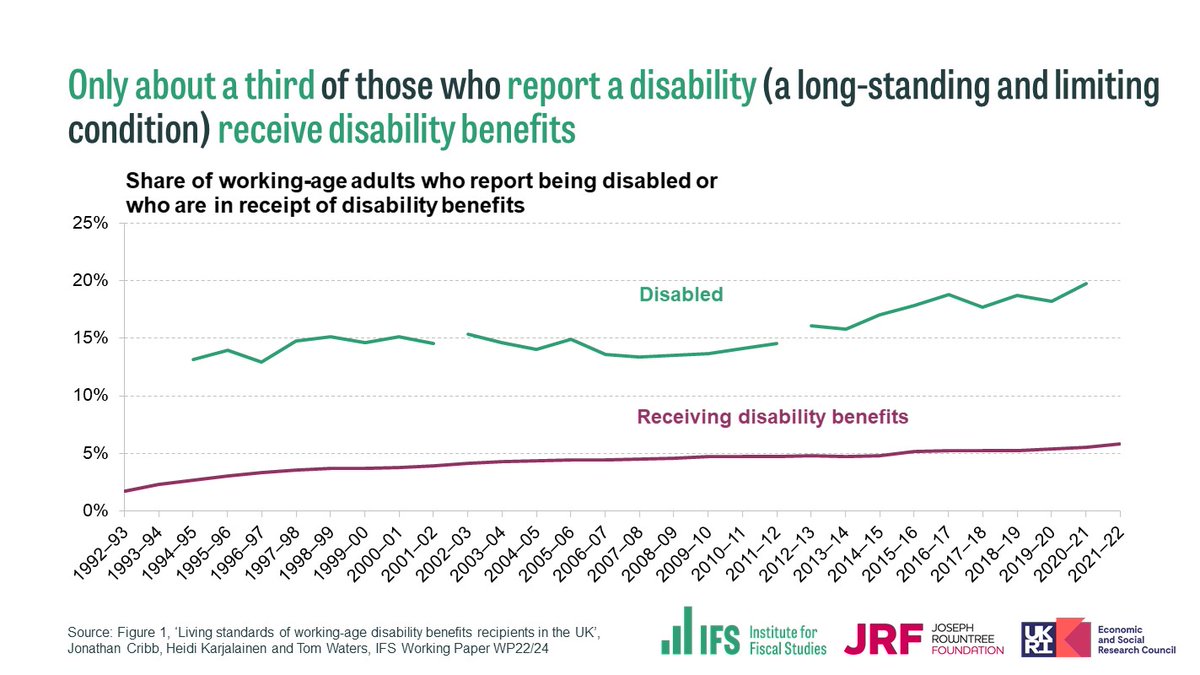
NEW: For every £1 given to households through the high-profile cuts to taxes, £2 is being taken away in the stealthy freezes to tax and benefit thresholds.
Read @TomWatersEcon and Tom Wernham’s @NuffieldFound-funded #IFSGreenBudget chapter> ifs.org.uk/publications/r…
THREAD: [1/8]
Read @TomWatersEcon and Tom Wernham’s @NuffieldFound-funded #IFSGreenBudget chapter> ifs.org.uk/publications/r…
THREAD: [1/8]
Alongside the headline tax cuts (to the basic rate of income tax & NICs) various thresholds and amounts in the tax-benefit system are being frozen.
This is raising the tax burden and reducing the size of the benefit system in real terms – especially when inflation is high [2/8]
This is raising the tax burden and reducing the size of the benefit system in real terms – especially when inflation is high [2/8]
Households in every part of the income distribution will, on average, lose more from freezes over the next three years than they will gain from the headline cuts.
The combined impact of freezes and headline cuts is broadly regressive. [3/8]
The combined impact of freezes and headline cuts is broadly regressive. [3/8]

The four-year freeze to the higher-rate threshold will bring 1.6 million more people on the higher rate of income tax by 2025–26.
The number of adults paying income tax will rise to 35.4 million (66% of adults) – 1.4 million more than the number today. [4/8]
The number of adults paying income tax will rise to 35.4 million (66% of adults) – 1.4 million more than the number today. [4/8]

The £50,000 threshold at which people start to lose child benefit, and the £60,000 threshold at which it is lost entirely, haven't been changed since their introduction in 2013.
As a result, more families with children lose the benefit, from 13% in 2013 to 26% today [5/8]
As a result, more families with children lose the benefit, from 13% in 2013 to 26% today [5/8]
Between income tax, NICs and child benefit loss, those with 2 children face a 61% marginal tax rate if they earn a little over £50k.
The continued threshold freeze, but rise of CB, means that marginal tax rate will grow over time, and affect steadily lower income families. [6/8]
The continued threshold freeze, but rise of CB, means that marginal tax rate will grow over time, and affect steadily lower income families. [6/8]

Other benefits are affected too: The indefinite freeze to the benefit cap (since 2016) means that a quarter of a million families will be affected by 2025–26 – 3.5x the number affected when the cap was last actively reformed in 2016. [7/8]
Read our report in full here: ifs.org.uk/publications/r…
Join us for an event at 11am today where we will discuss these findings [8/8]: ifs.org.uk/events/reforms…
Join us for an event at 11am today where we will discuss these findings [8/8]: ifs.org.uk/events/reforms…

• • •
Missing some Tweet in this thread? You can try to
force a refresh





















